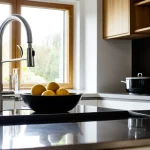Unique Formats Defining the UK Kitchen Scene
The UK kitchen scene has seen a significant transformation, fueled by the growing popularity of supper clubs and chef’s tables. These formats offer a fresh alternative to traditional dining, creating intimate experiences where guests can connect directly with the chef and enjoy personalized menus. Supper clubs often take place in private homes or unique venues, enhancing the charm and exclusivity of the meal.
Alongside these, the rise of pop-up restaurants and home-based dining has further diversified the culinary landscape. Pop-ups bring a sense of adventure, as they appear temporarily in unexpected locations, allowing chefs to showcase innovative menus without the constraints of a permanent venue. Similarly, home-based dining blurs the line between professional and casual eating, giving diners a cozy, immersive experience that is often more affordable and personal.
Also to see : Exploring innovative techniques adopted by uk kitchens to minimize food waste
These unique formats introduce flexibility and diversity that traditional restaurant settings may lack. They provide chefs with creative freedom and patrons with distinctive, memorable meals. This evolution illustrates how the UK kitchen scene is embracing innovation while enriching the cultural fabric of dining in the country.
Social Atmosphere and Culinary Creativity
Kitchen-led events offer intimate dining experiences that foster a strong communal atmosphere. Unlike traditional restaurants, these settings bring diners closer not only to each other but also to the creative process behind their meals. Sharing a meal in this way encourages meaningful conversation and connection, which appeals to those craving more than just a standard dinner.
This might interest you : Discover the secret ingredients for crafting an unforgettable uk dining experience
Chefs use these occasions as a platform for creative menus, pushing boundaries beyond typical restaurant offerings. This freedom allows for UK food innovation, where experimental dishes and unique flavor combinations come to life. Diners engaged in these events often enjoy the surprise and artistry found only in settings that prioritize culinary imagination over routine.
For adventurous diners, this style of dining delivers a compelling food journey that blends social interaction with gastronomic discovery. The blend of a communal atmosphere and inventive cuisine distinguishes these events as destinations for food enthusiasts eager to explore contemporary UK gastronomy.
Comparing UK Kitchen Experiences to Restaurants and Bars
The contrast between restaurants vs home dining in the UK is striking, particularly when considering service style and guest interaction. At home, diners often enjoy a relaxed, informal atmosphere where conversation flows freely without the structured timing of courses typical in restaurants. In restaurants and bars, service tends to be more formal and paced, with staff guiding the experience. This dynamic shapes not only how meals are enjoyed but also influences guests’ overall satisfaction. Many UK diners appreciate the personalized and attentive service in restaurants, yet miss the intimate and flexible nature of home dining.
From an expert chef opinion, the freedom in menu development at home is often greater. Chefs in restaurants face constraints such as kitchen resources, menu balance, and seasonal availability, whereas home cooks can experiment and tailor dishes to specific tastes without these limitations. This freedom fosters creativity but can sometimes result in less polished presentations or inconsistent results compared to professional kitchens.
Recent UK dining trends reveal a shift in consumer preferences, favoring more diverse and alternative dining options. Many consumers seek experiences that blend the comfort of home with the sophistication of dining out. This has led to growth in casual dining venues and pop-up restaurants that emphasize ambience and social interaction, bridging the gap between traditional restaurant service and home-style flexibility. Understanding these trends helps culinary professionals adapt to evolving expectations and deliver memorable dining experiences that resonate with UK patrons.




